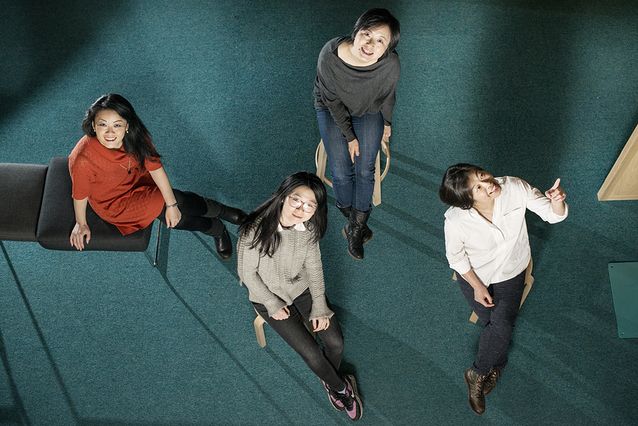This team wants to reduce the cognitive decline that we face as we age. It can be prevented by creating attractive 3D environments for cognitive and physical training, and studying the changes in brain activity through neuroimaging methods, team leader Ping Jiang tells us.
“As we age, our cognitive abilities decline, which decreases the independence and quality of life especially for elderly people. In the near future, cognitive disabilities are expected to cause a very costly crisis in healthcare. These are important global challenges that our team wants to tackle.
Our solution is a software targeted at the elderly, which we want to implement either in virtual or augmented reality in order to provide an enjoyable environment for physical and cognitive training. Such a virtual environment could be, for example, a lake where one can row a boat – basically anything that senior citizens find attractive and engaging. Once you’ve put on your VR headset, you’re ready to complete different tasks related to daily life in a motivating 3D environment.
We use neuroimaging methods to investigate how the combination of physical activity and cognitive training helps elderly people improve their brain functions, for instance the use of working memory. In layman’s terms, neuroimaging is a way of visualising the brain with the help of an MRI scan, for example. We will use brain imaging to measure the effects on brain functions and structure in order to understand the underlying mechanisms of brain neuroplasticity.
Our international team has a lot of multidisciplinary know-how in different fields, from neuroimaging to software design. What we need to do first is recruit subjects in cooperation with a nursing home and start creating the software and virtual environments. We’re highly motivated, since although aging is a shared challenge, it presents a big opportunity as well. Elderly people have a lot of experience, which they can use to help others and they provide society with a lot of input. The way we see it is that elderly people are a treasure for the world.”
1. Why can your team make the world a better and more sustainable place?
We have a clear aim, lots of motivation and modern technology. We want to reduce cognitive decline and thus improve elderly people's quality of life.
2. If you could collaborate with anyone in the world, who would it be?
We’re interested in the newest forms of high tech, so collaborating with software and hardware companies that develop brand new technologies would be great. The best case scenario would be to provide elderly people with an experience in a virtual environment without any concrete instrument, just their eyes.
3. What’s the best thing that has come out of science and research so far?
Anything that has demonstrated that the neuroplasticity of our brains isn’t static as we age. For example, functional magnetic resonance imaging, which is a form of neuroimaging that measures brain activity, is an amazing tool for investigating our brains without being invasive.
Team members:
Ping Jiang, team leader, PhD student, University of Helsinki and Aalto University
Bei Wang, clinical physician, Healthcare Center of Helsinki & PhD student, University of Helsinki
Yina Ye, CEO, BetterDays Oy
Liuliu Du, visiting researcher, National Institute for Health and Welfare (THL)

